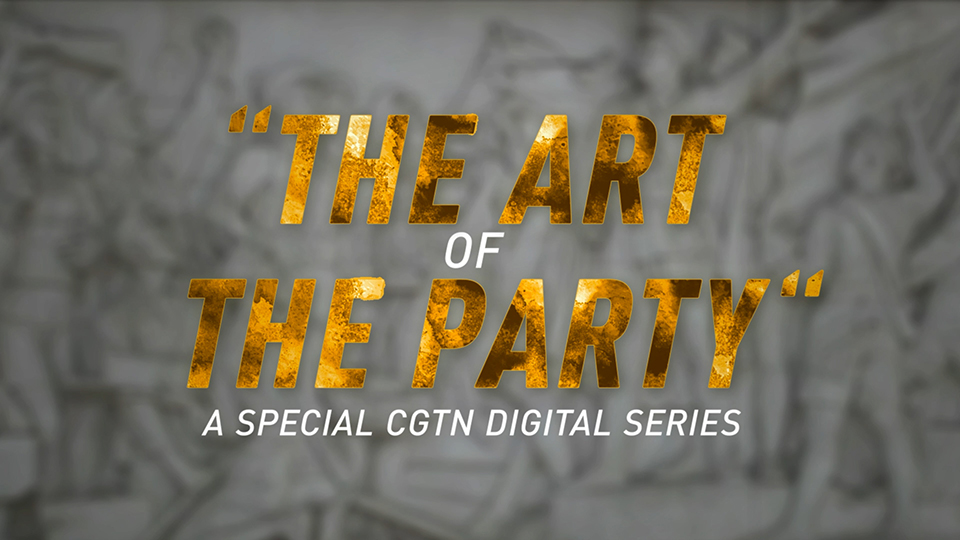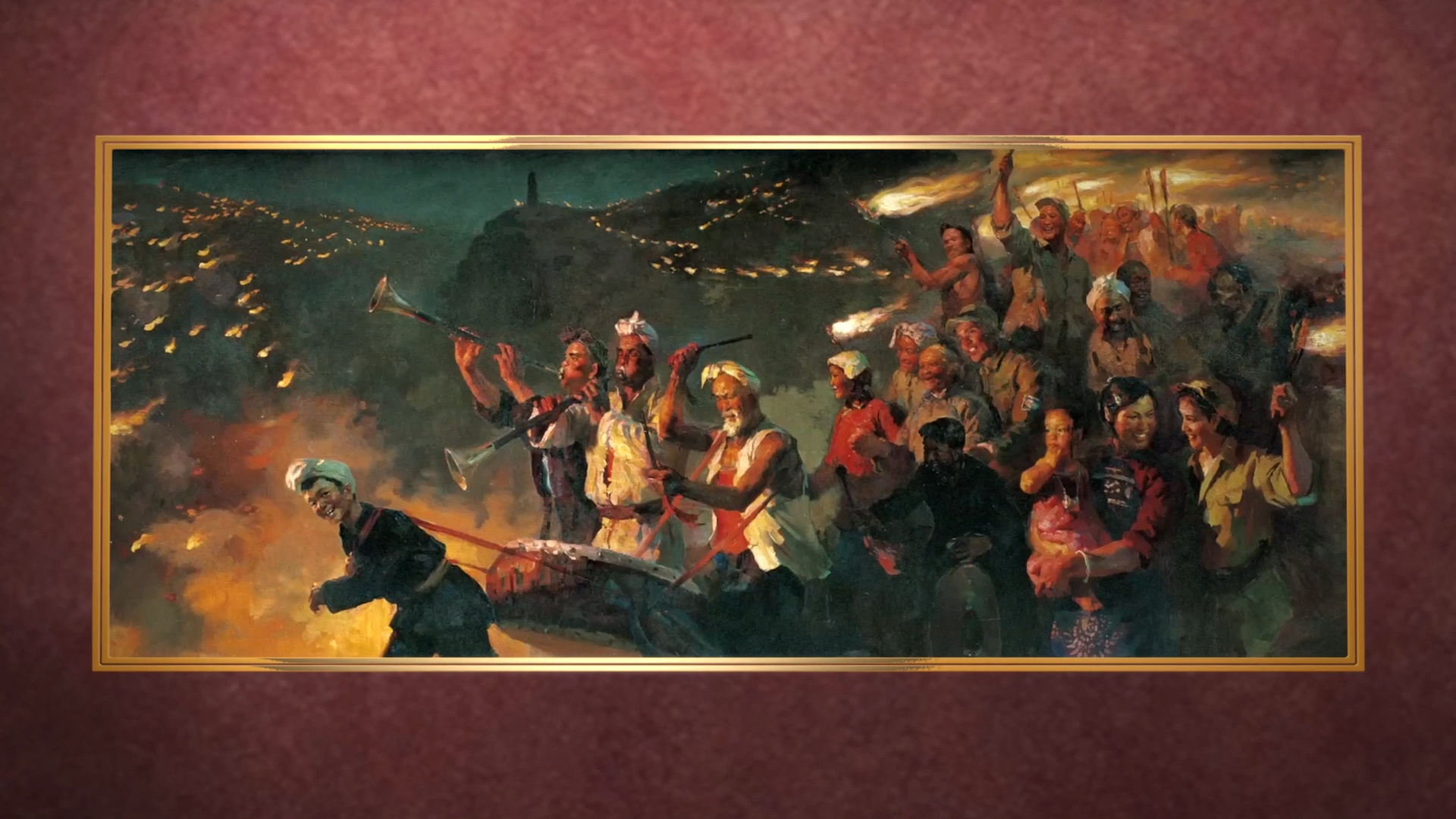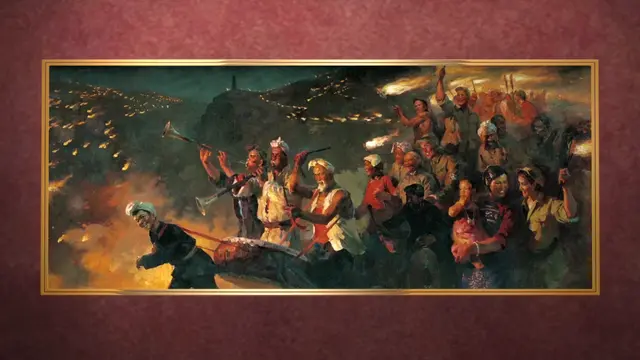00:25

Yan'an Torch” is a classic oil painting created by Cai Liang in 1960. This painting depicts jubilation among the Yan'an people.
01:54

They just heard news of Japan's unconditional surrender on August 15, 1945. The army is dancing with the people, along with their torches, for miles.
The dancing torches symbolize the anti-Japanese sentiment burning in China. The dawn of victory is about to light up the darkness.
The portrait shows the triumphant mood of the army and the Chinese people and their happy vision for the future.
Yan’an was the final destination of the Red Army’s “Long March” in 1934-35. It was the base of the Communist Party of China from 1935 to 1948. It is sometimes called a “revolutionary holy land.”
Yan’an was the command center for China’s Communist Party during the war against Japan. On July 7, 1937, gunfire erupted between Japanese and Chinese forces.
Japanese troops attacked the Chinese garrison near Lugou Bridge, also known as Marco Polo Bridge. The clash marked the official beginning of China’s War of Resistance against Japanese Aggression. Japanese troops were committing atrocities against the Chinese people.
In August 1937, Mao Zedong, Zhu De, Zhou Enlai, and others held the “Luochuan Meeting.” It would shape the course of China’s war against Japan.
Communist Party leaders vowed “total resistance”. The Red Army became the Eight Route Army. It launched a fierce campaign of guerilla warfare behind Japanese lines.
At Luochuan, party leaders also decided to recruit peasants to fight. “Total resistance” required a total commitment from the Chinese people. Peasant militias would fight alongside the Army. China’s War of Resistance became a “people’s war.”
This oil painting commemorates that fateful meeting. Where the fortunes of war started to turn.
A month after Luochuan, Chinese Communist forces won their first major victory against the Japanese at the Battle of Pingxingguan.
The Long March ended in Yan’an. What followed was a long war and Japan’s defeat.
The painting is now on display at the China National Museum in Beijing.
Check out
The China Report
, our new weekly newsletter.Subscribe here!
 简体中文
简体中文

